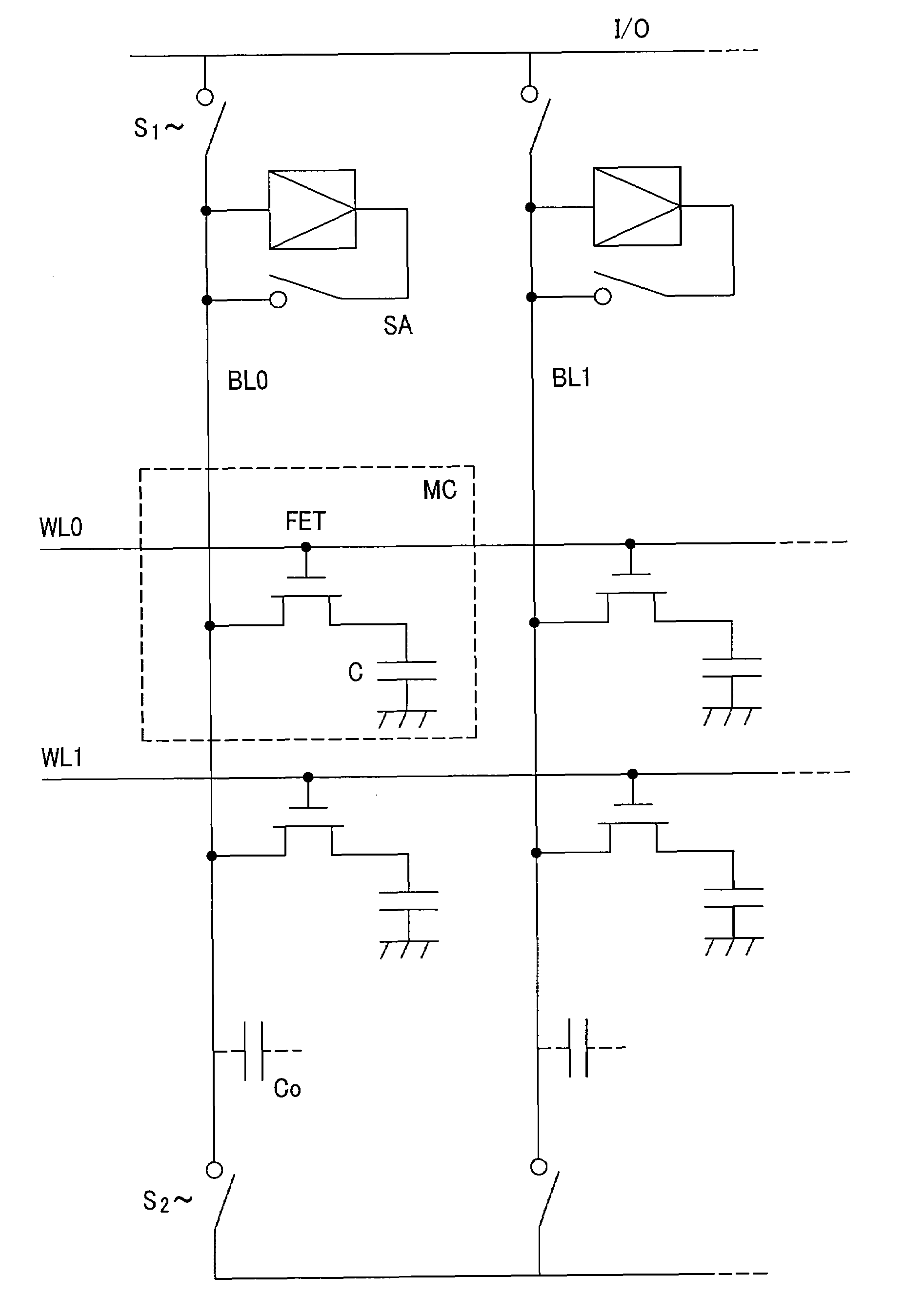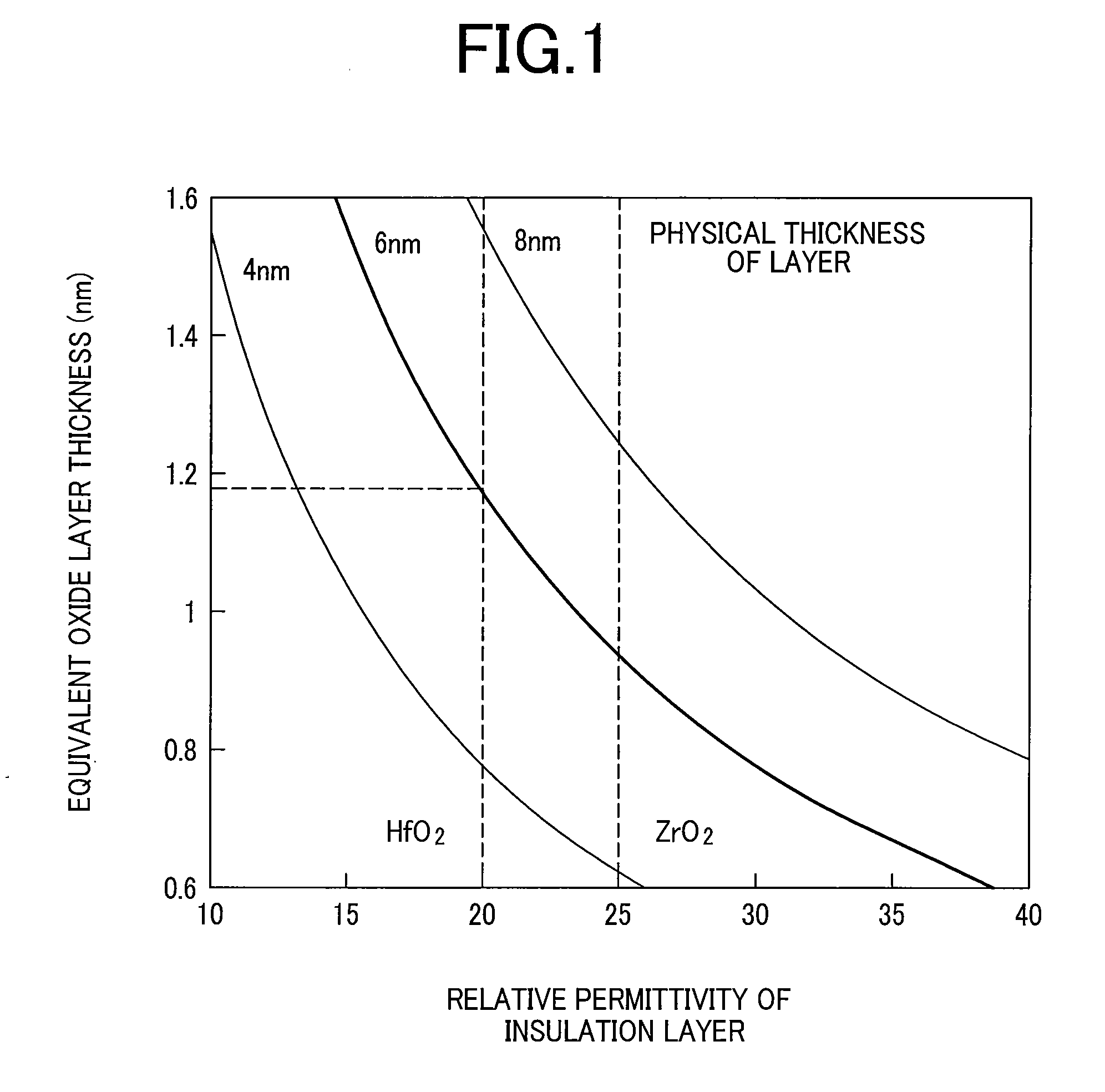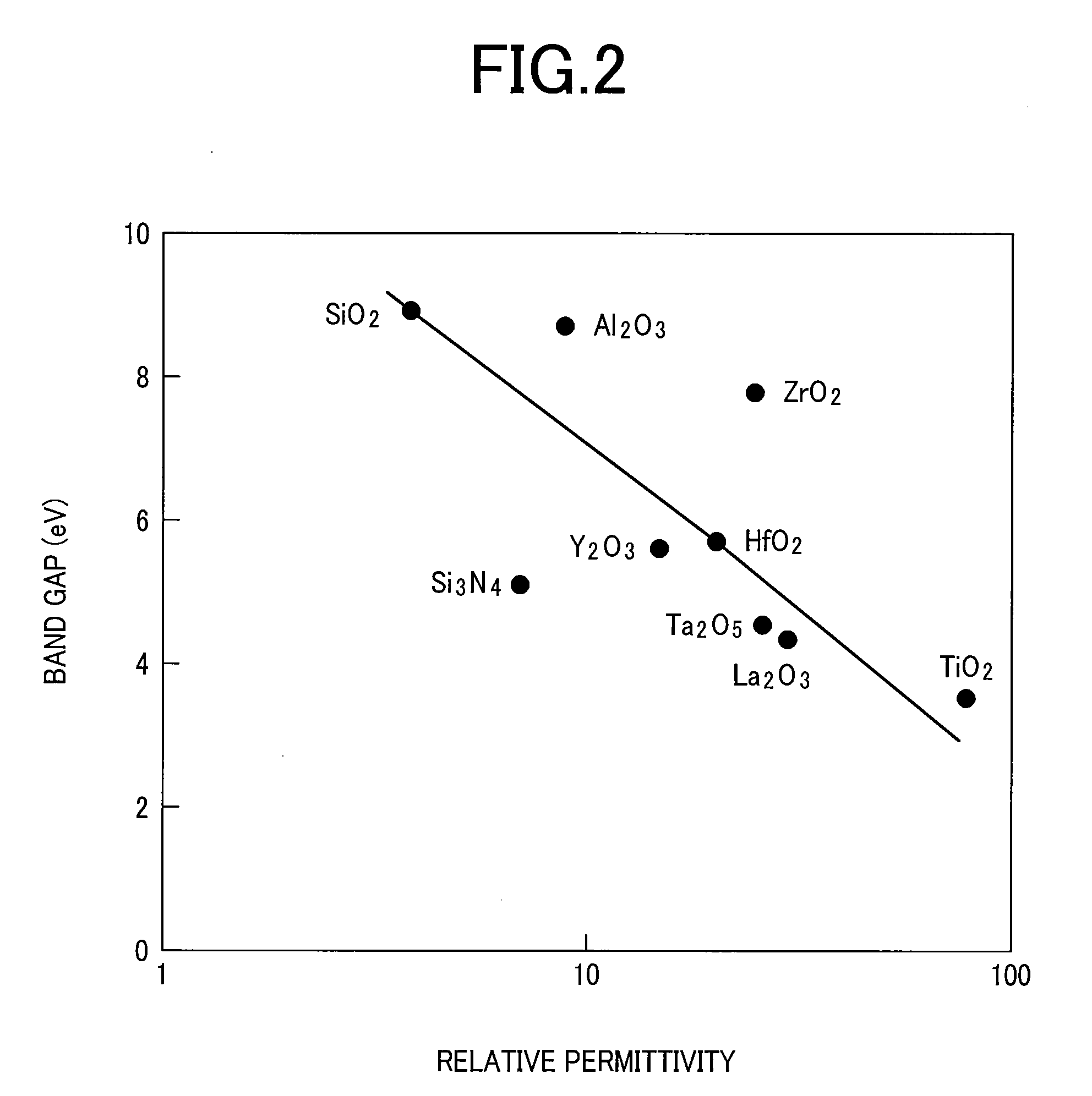Semiconductor integrated circuit device
- Summary
- Abstract
- Description
- Claims
- Application Information
AI Technical Summary
Benefits of technology
Problems solved by technology
Method used
Image
Examples
embodiment 1
[0072]As described above, in the capacitor of the invention, a first electrode (upper electrode) uses one of members of ruthenium and ruthenium oxide and a second electrode (lower electrode) uses at least one element selected from the group consisting of titanium nitride, titanium, tantalum nitride, tantalum, tungsten nitride, tungsten, phosphorus-doped polysilicon, gold, silver, cupper, and platinum. Further, on the premise for the selection of the first and the second electrode materials, a capacitor insulation layer and a corresponding cap insulation layer were studied. Since the group of materials for the second electrode are those known so far, detailed descriptions therefor are to be omitted. The thickness for each of the members is as described below. The first electrode (upper electrode) is selected within a range from 5 nm to 30 nm, the second electrode (lower electrode) is selected within a range from 5 nm to 30 nm, and the capacitor insulation layer is selected within a r...
embodiment 2
[0116]It is considered that the result shown in Embodiment 1 may be obtained also in the case of reversing the relation of the capacitor up side down. That is, ruthenium is used for the lower electrode and hafnium dioxide is used as the insulation layer. Since ruthenium diffuses into hafnium dioxide when stacking ruthenium and hafnium dioxide, tantalum pentoxide is inserted as the cap insulation layer to the boundary. Finally, titanium nitride is formed as the upper electrode. Since also the capacitor of this structure results in a problem shown in Embodiment 1 that ruthenium diffuses into hafnium dioxide to increase scattering of the leak current density, the cap insulation layer of tantalum pentoxide is inserted to the boundary to solve the problem and the reaction can be suppressed.
[0117]A method of manufacturing a DRAM memory capacitor having a capacitor suitable to a second embodiment is to be described. Also in this example, since the invention concerns a structure of a memory...
PUM
 Login to View More
Login to View More Abstract
Description
Claims
Application Information
 Login to View More
Login to View More - R&D
- Intellectual Property
- Life Sciences
- Materials
- Tech Scout
- Unparalleled Data Quality
- Higher Quality Content
- 60% Fewer Hallucinations
Browse by: Latest US Patents, China's latest patents, Technical Efficacy Thesaurus, Application Domain, Technology Topic, Popular Technical Reports.
© 2025 PatSnap. All rights reserved.Legal|Privacy policy|Modern Slavery Act Transparency Statement|Sitemap|About US| Contact US: help@patsnap.com



